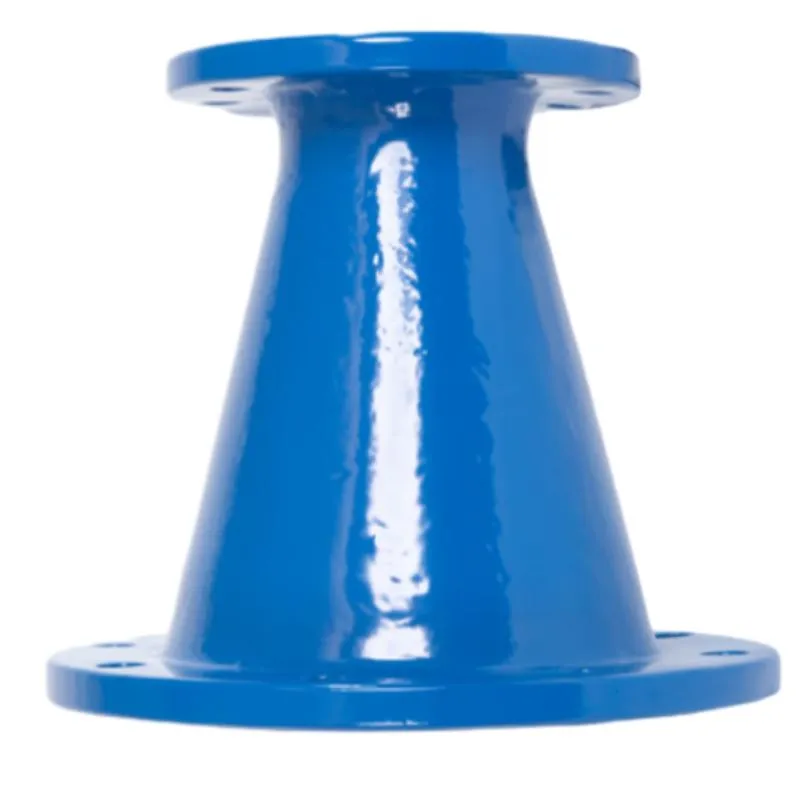Saddle Clamp for PVC Pipe | Durable, Leak-Proof Fit
Field notes on getting a Saddle Clamp for PVC right (and why the reducer matters more than you think)
If you’ve ever spent a cold morning on a trench edge arguing about torque values, you’ll know that the humble Saddle Clamp For Pvc Pipe can make or break a job. To be honest, most failures I’ve seen weren’t because PVC is “weak.” They happened at transitions—where a tapped branch meets a flanged spool, or where the branch flows through a reducer. That’s why I pay unusual attention to the mating fittings, especially reducers built to the same standards as the saddle and main.

What’s trending in PVC branch connections
Municipal and industrial teams are pairing PVC mains (PN10–PN16) with ductile-iron flanged fittings certified to EN and ISO, because the pressure classes and gasket chemistry line up cleanly. A growing number specify EPDM gaskets per EN 681-1 and ductile iron per ISO 1083, then mix in EN 12842 for the PVC flange interface. It seems fussy, but actually it cuts leak callbacks. Many customers say installation is faster than all-stainless clamp sets, surprisingly.
The reducer that keeps the branch honest
Here’s a workhorse I encounter a lot in PVC networks: ISO2531/ EN545/ EN598/ EN12842 Flanged Concentric Reducer (origin: Room 1005, Building 1-2, Phase I, North China Golden Sun Commercial City, Xinhuanan Road, Xiangdu District, Xingtai City, Hebei Province, China). It’s ductile iron with EPDM, designed for drinking water and neutral liquids up to +70°C. Pair it with a properly rated Saddle Clamp For Pvc Pipe and you’ve got a robust branch assembly from main to instrument tap.
| Parameter | Specification (≈ real-world use may vary) |
| Material | Ductile iron grade 500-7 / 450-12 (ISO 1083) |
| Gasket | EPDM (EN 681-1) |
| Working pressure | PN10 to PN40 |
| Standards | DIN EN 545 / EN 598 / BS 4772 / ISO 2531; PVC flange interface per EN 12842 |
| Temperature | Up to +70°C (neutral liquids) |
| Nominal sizes | ≈ DN80–DN600 (check orderable range) |
| Coating | Epoxy for potable water per EN 545; DFT ≈ 250 µm |
| Testing | Hydrostatic ≥ 1.5×PN; dimensions per EN 545; gasket per EN 681-1 |

Process flow and QA (quick version)
- Melting and nodularizing ductile iron (ISO 1083), then precision casting and machining of flanges.
- Shot-blast, epoxy coating for potable service (EN 545 guidance), DFT measured per ISO 2808.
- Gaskets molded to EN 681-1; compression/aging tests run on batch samples.
- Hydrostatic proof tests at 1.5×PN; dimensional checks and flange drilling verified to EN/ISO.
- Typical service life: 50 years in neutral water if installed to spec; environment can shorten/extend.
Where it’s used (and why teams like it)
Municipal water distribution, irrigation branches, campus utilities, and light industrial process water. Advantages people mention: consistent sealing with EPDM, compatibility with PVC flanges (EN 12842), and clear PN ratings that match the Saddle Clamp For Pvc Pipe rating on the same run.
Vendor snapshot (what I’m seeing on quotes)
| Vendor | Pressure range | Certs (indicative) | Lead time | Customization | Price band |
| HBYQ Metal (Hebei) | PN10–PN40 | EN 545/598/ISO 2531; ISO 9001 and EN 10204 3.1 available on request | ≈ 3–6 weeks | Flange drilling, coating thickness, logo | Mid |
| Generic importer | PN10–PN16 | Basic CoC; limited traceability | Stock-dependent | Minimal | Low |
| EU brand house | PN10–PN40 | DVGW/WRAS where applicable | 6–10 weeks | Broad catalog | High |

Installation notes that save headaches
- Match PN: saddle clamp, reducer, bolts, and PVC main should share PN class (don’t mix PN16 clamp with PN25 line).
- Clean PVC OD, use specified torque pattern, re-torque after first pressurization if manufacturer allows.
- Pressure test to site spec—often 1.5× working pressure for ≥ 30–120 minutes per EN 545 guidance.
Quick case notes
City retrofit: DN200 PVC main, PN16. A PN16 Saddle Clamp For Pvc Pipe fed a DN80 branch through a PN16 flanged concentric reducer. Site test at 24 bar for 1 hour—no visible weeps. Installer told me, “faster than the stainless strap set we used last year.”
Food factory utilities: Neutral process water at 30–40°C. Team standardized EPDM gaskets and EN 12842 flanges so clamp, reducer, and valve lined up every time. Downtime dropped. Honestly, small spec discipline, big payoff.

Customization checklist
- Flange drilling: PN10/16/25/40 bolt patterns to suit PVC flanges (EN 12842).
- Gasket: EPDM standard; NBR for certain non-potable neutrals—verify compatibility.
- Coating thickness and color; logo and heat numbers for traceability.
Authoritative citations
- EN 545: Ductile iron pipes, fittings, accessories and their joints for water pipelines.
- ISO 2531: Ductile iron pipes, fittings and accessories for water applications.
- EN 681-1: Elastomeric seals — Requirements for water and drainage applications — Part 1: Vulcanized rubber.
- ISO 1083: Spheroidal graphite cast irons — Classification.
- EN 12842: Thermoplastics piping systems — Flanged joints between fittings and pipes — Requirements and test methods.
-
Comprehensive Guide to Square to Round Recessed Drain Cover 500mm | Durable & Efficient Drainage SolutionsNewsNov.24,2025
-
Round to Square Manhole Cover – Adaptive Infrastructure Solutions for Modern CitiesNewsNov.24,2025
-
Square to Round Recessed Drain Cover 450mm – Durable & Efficient Drainage SolutionsNewsNov.23,2025
-
Durable Round Inspection Chamber Covers for Urban and Industrial Use | HBYQ MetalNewsNov.23,2025
-
Square to Round Recessed Drain Cover | Durable & Adaptable Drain SolutionsNewsNov.22,2025
-
Durable Square to Round Recessed Drain Cover 300mm | Reliable Drain SolutionsNewsNov.22,2025
-
Durable Cast Iron Drain Cover Round for Global Infrastructure NeedsNewsNov.22,2025
